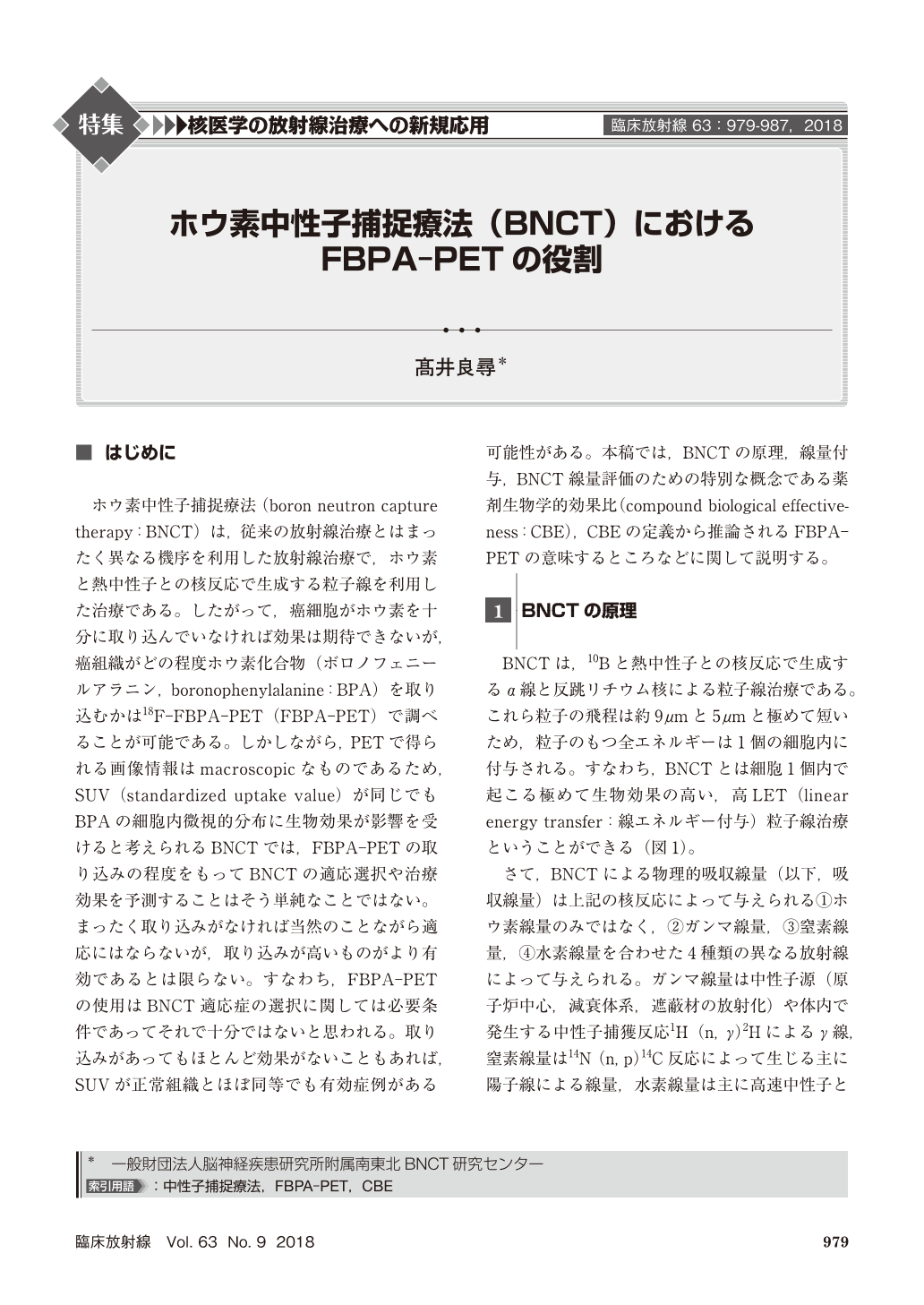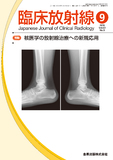Japanese
English
- 有料閲覧
- Abstract 文献概要
- 1ページ目 Look Inside
- 参考文献 Reference
ホウ素中性子捕捉療法(boron neutron capture therapy:BNCT)は,従来の放射線治療とはまったく異なる機序を利用した放射線治療で,ホウ素と熱中性子との核反応で生成する粒子線を利用した治療である。したがって,癌細胞がホウ素を十分に取り込んでいなければ効果は期待できないが,癌組織がどの程度ホウ素化合物(ボロノフェニールアラニン,boronophenylalanine:BPA)を取り込むかは18F-FBPA-PET(FBPA-PET)で調べることが可能である。しかしながら,PETで得られる画像情報はmacroscopicなものであるため,SUV(standardized uptake value)が同じでもBPAの細胞内微視的分布に生物効果が影響を受けると考えられるBNCTでは,FBPA-PETの取り込みの程度をもってBNCTの適応選択や治療効果を予測することはそう単純なことではない。まったく取り込みがなければ当然のことながら適応にはならないが,取り込みが高いものがより有効であるとは限らない。すなわち,FBPA-PETの使用はBNCT適応症の選択に関しては必要条件であってそれで十分ではないと思われる。取り込みがあってもほとんど効果がないこともあれば,SUVが正常組織とほぼ同等でも有効症例がある可能性がある。本稿では,BNCTの原理,線量付与,BNCT線量評価のための特別な概念である薬剤生物学的効果比(compound biological effectiveness:CBE),CBEの定義から推論されるFBPA-PETの意味するところなどに関して説明する。
18F-FBPA-PET is investigated as a method for selection of candidate patients and prediction of therapeutic sensitivity of BNCT. Microdistribution of BPA influences the biological effect of BNCT. Therefore, FBPA-PET is just a necessary condition and not a sufficient condition to select a candidate patient and predict a sensitivity of tumor for BNCT because an image obtained from FBPA-PET is a kind of macroscopic one. In this review, I will explain the implications and expectations of FBPA-PET which can be deduced from the consideration of CBE factor.

Copyright © 2018, KANEHARA SHUPPAN Co.LTD. All rights reserved.


